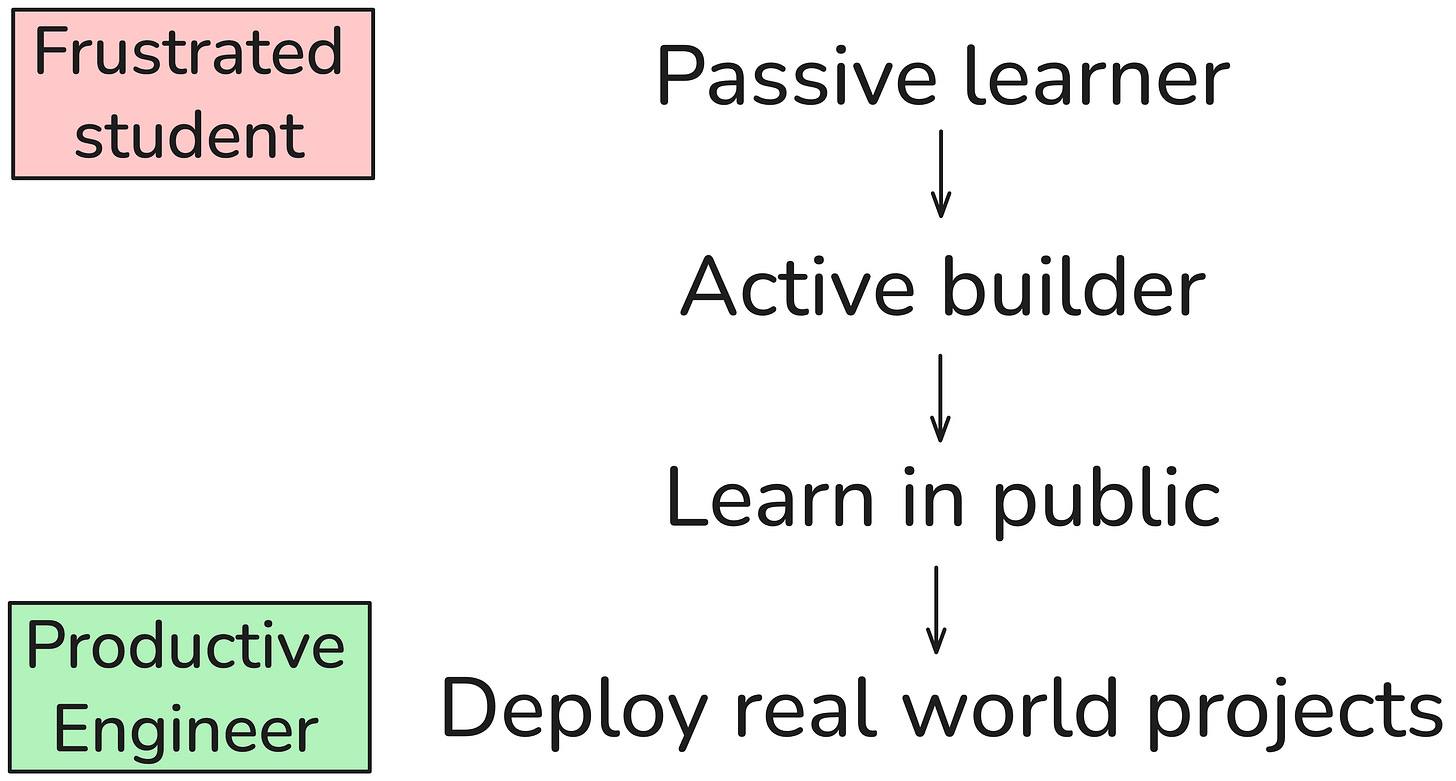How i studied smarter, not longer, to get ahead in software
Busy but not learning? Replace passive tutorials with hands-on builds, deliberate practice, and real deployments that prove skill.
I finished uni better than average without longer hours. Two years in person, two remote because of the pandemic. I learned fastest when I controlled my schedule during those last two years. Remote let me rewatch hard parts, skip easy parts, take a break, and come back sharper.
Here is the gap I saw: Most students and many junior engineers drown in tutorials and pretty notes. They only ship localhost demos to show professors because it’s mandatory, not real code on things that are useful. They copy from Stack Overflow (from ChatGPT now) without understanding trade-offs. That keeps them busy, but they don’t learn.
If you want to move faster than your peers, you need a simple system. This post is about how a student becomes a productive engineer whom managers trust.
In this post, you’ll learn
How to replace passive tutorials with fast variations you can ship.
How to use mental models to reason about trade-offs before coding.
How to practice on purpose with short loops and debugging drills.
How…


